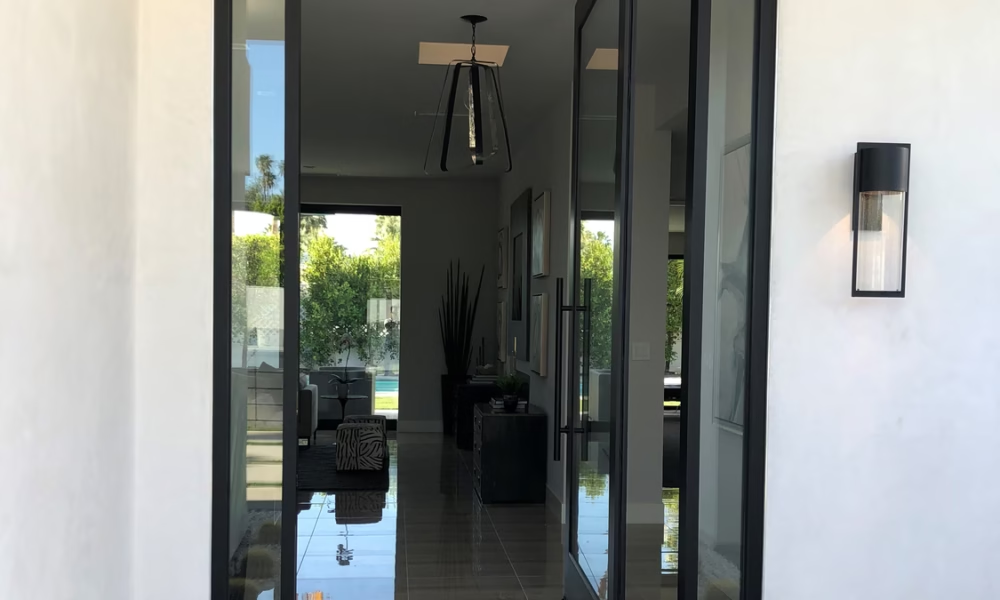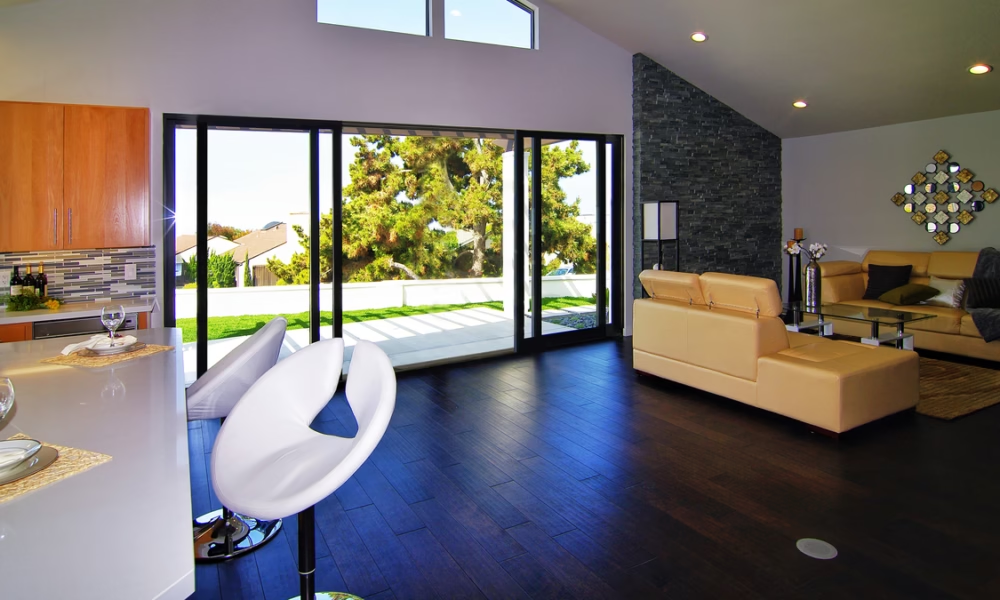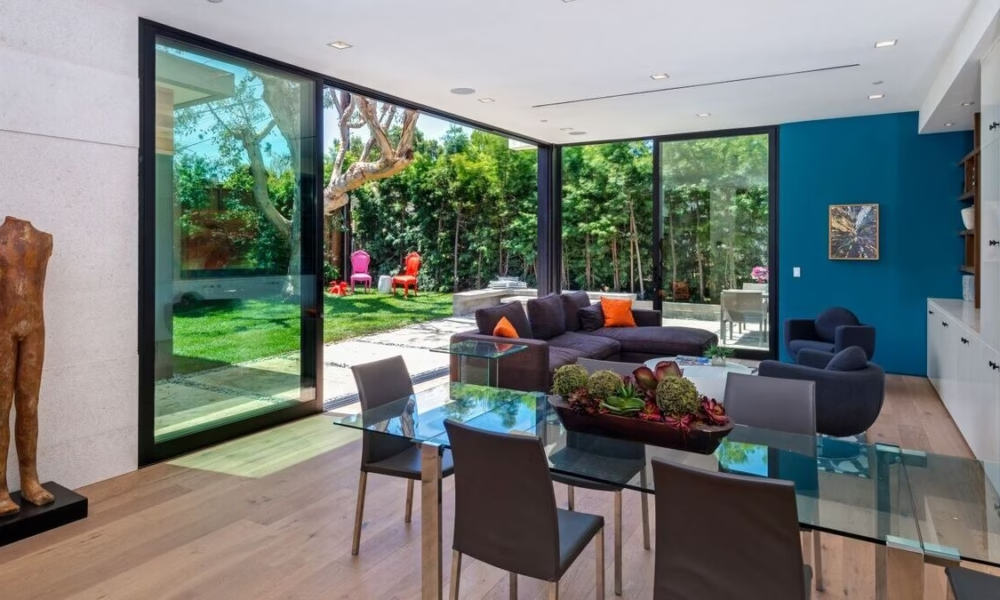Buying sliding glass doors is not just an aesthetic decision, it also involves evaluating technical aspects that will impact the system’s functionality, safety, and durability.
Many mistakes happen because buyers focus only on design and price, without considering critical details such as the exact measurements of the aluminum sliding door, the type of glass, the quality of the hardware, and delivery times.
Having a clear checklist before buying can help you avoid delays, extra costs, and installation issues, ensuring your investment lasts and meets the project’s expectations, while preventing future problems.
In this article, you’ll find a practical guide with all the essential points to check before purchasing your sliding doors, whether for a residential home or a commercial project, and how working with a specialized supplier can simplify the process and guarantee a professional result.
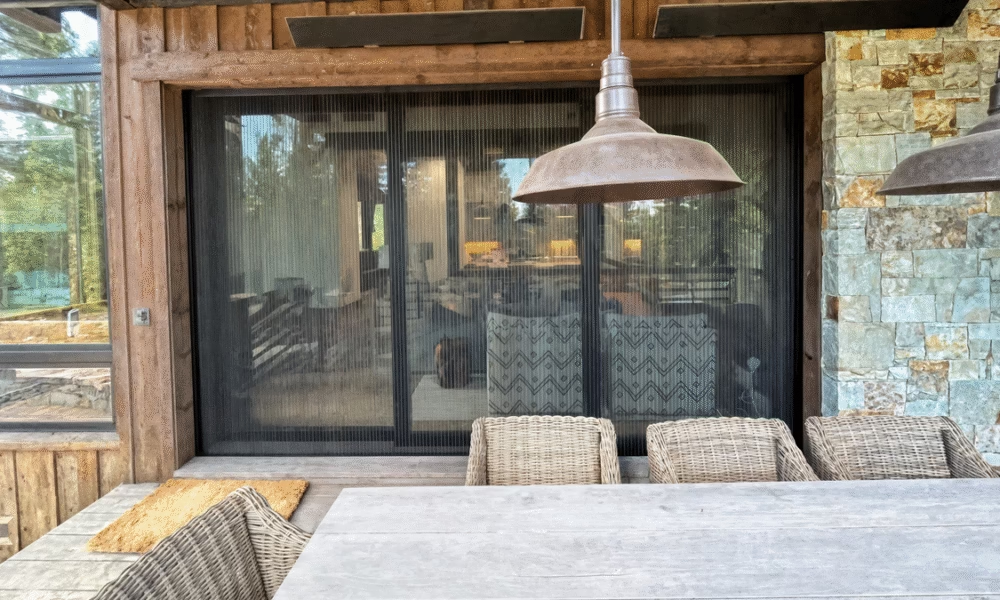
Step 1: Measuring the Aluminum Sliding Door and Construction Details
One of the most critical steps before buying sliding doors is having accurate measurements and properly preparing the space where they will be installed. Mistakes at this stage can lead to extra costs, delays, last-minute adjustments, or even the need to replace the door.
Rough Opening and Leveling
It’s essential to verify that the rough opening has the correct dimensions and that the walls and floor are level and plumb. An irregular opening can affect sealing, panel movement, and the door’s energy efficiency. A professional can help ensure these measurements are accurate.
Squareness and Alignment
Check that the angles are exactly 90° and that there are no frame deformations. This will help prevent air and water infiltration, ensure the rollers function properly, and maintain correct lock alignment.
Installation Tolerances
Leave enough space for the frame, seals, and any necessary adjustments. Forcing the door into a tight opening can compromise performance and long-term durability.
It’s also important to have technical drawings and measurements reviewed by a specialized installer to guarantee the door fits the space correctly and avoid future issues.
- You may also be interested in reading: Advantages of Using Aluminum Sliding Doors in U.S. Homes
Step 2: Sliding Door Configuration and Usage
Before choosing your sliding door, it’s important to define how it will be used and how many panels the space requires. An incorrect configuration can affect comfort, aesthetics, and functionality in the installation area. Some larger projects may even require more complex systems such as storefront systems and/or curtain walls.
Number of Panels and Sliding Directions
Sliding doors can be designed with 2, 3, or 4 panels, and the movement of each leaf should be selected according to the desired circulation and access. Some options combine fixed and operable panels, allowing for partial or full openings.
Other alternatives, such as Max Slider systems, are ideal for maximizing visibility, though they’re not suitable for every project.
Fixed vs. Active Panels
A common mistake is failing to identify which panel will open and which will remain fixed. This affects the placement of the handle, the flow of entry and exit, and even the ventilation of the space.
Interior and Exterior Space
Evaluate the area surrounding the door: although sliding doors don’t take up as much space as hinged ones, you still need to ensure nothing blocks the movement of the panels and there’s enough clearance for comfortable passage.
An architect can help you create a simple plan showing the opening direction of each panel to confirm that circulation will be practical and functional before manufacturing begins.
Step 3: Sliding Door Performance and Comfort
Choosing the right door is not only about size and design, it’s also important to evaluate thermal and acoustic performance, as these factors directly impact daily comfort and the space’s energy efficiency.
Glass and Thermal Insulation
Opt for high-performance glass, such as low-E with an air or argon gas chamber, which helps maintain a stable indoor temperature and reduces reliance on air conditioning or heating. Consider indicators like U-factor and SHGC to measure how efficiently the door limits heat transfer and solar radiation.
Acoustic Insulation
In urban areas or near noisy surroundings, selecting laminated glass with acoustic interlayers and well-sealed profiles can make a significant difference. This is essential if you want privacy and quiet inside the home or commercial space.
Safety and Strength
Ensure the door uses tempered or laminated glass to reduce breakage risks and features secure locking systems.
💡 Tip: Not all standard doors meet advanced insulation requirements. If your project is in an extreme climate or noisy area, consider specialized configurations to achieve better comfort and efficiency.
Step 4: Hardware and Safety First
Hardware is a key component to ensure the proper operation and security of a sliding glass door. Choosing low-quality parts can lead to functional issues and compromise the system’s durability.
Rollers and Tracks
Look for high-capacity roller systems that can support the weight of the glass and guarantee smooth sliding. Tracks should be corrosion-resistant and well-sealed to prevent dust and water buildup.
Some manufacturers, like PRL, offer top-rolling and bottom-rolling options, which help adapt to different project needs.
Locks and Security Points
Check that the door includes a reliable locking system, preferably with multi-point mechanisms, to strengthen security against intrusion attempts.
Automation Compatibility
If you plan to integrate automatic opening and closing systems, make sure the hardware and tracks are compatible with motors or smart accessories.
Remember that investing in high-quality hardware from the start reduces the risk of costly maintenance and extends the overall lifespan of the structure.
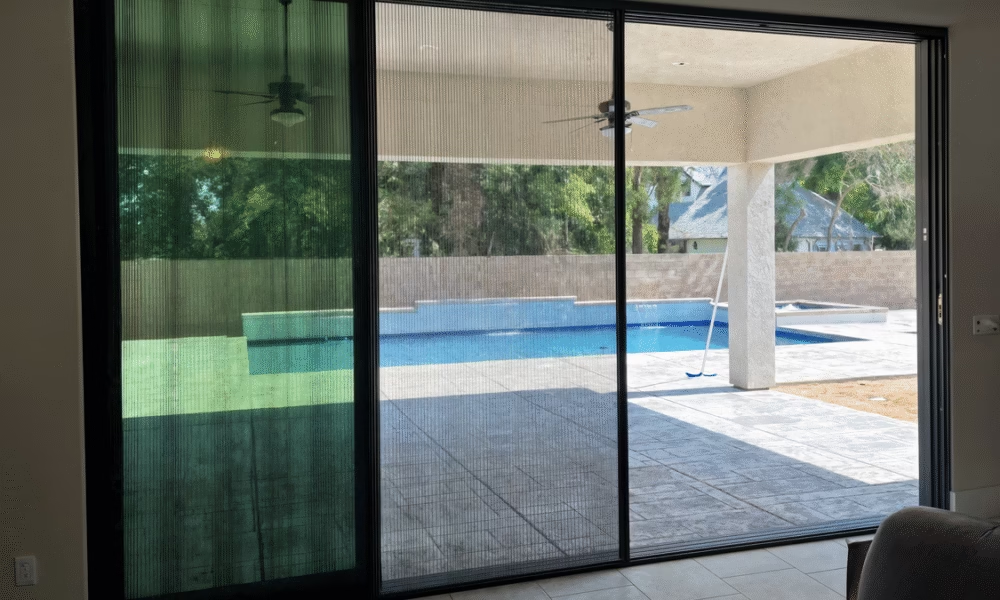
Step 5: Finishes, Warranties, and Maintenance
The finish and surface protection quality of an aluminum and glass sliding door not only affect its appearance but also its durability against factors such as sunlight, humidity, and corrosion. In addition, warranties and recommended maintenance are key indicators of a reliable product.
Protective Finishes
Choose finishes like anodizing or powder coating, which offer high resistance to corrosion and help the door maintain its appearance for longer, even in extreme climates or coastal areas.
Clear Warranties
Review the coverage offered by the manufacturer on the structure, hardware, and finishes. A strong warranty is often a good indicator of quality and long-term support. Keep in mind that the initial investment can be significant, so it’s important to protect it as much as possible.
Preventive Maintenance
Although aluminum sliding doors require little maintenance, it’s essential to follow basic recommendations: periodic cleaning of tracks and lubrication of hardware. This extends the system’s lifespan and prevents operational issues.
💡 Tip: Check the maintenance requirements for each type of finish and follow the suggested schedule to avoid premature wear.
Step 6: Delivery Times and Logistics
Delivery times are an important —and often underestimated— factor when choosing aluminum and glass sliding doors. Poor planning can delay the entire project and significantly increase costs.
Always confirm delivery times before finalizing the purchase and adjust your construction schedule to avoid delays and additional expenses.
Realistic Lead Times
Ask the supplier how long manufacturing and delivery will take for the chosen model. Custom doors may require several more weeks compared to standard options, which might be available for shipment that same week.
Stock Availability
If the project is urgent, check whether the manufacturer has prefabricated systems or immediate availability to shorten wait times.
Installation Coordination
Ensure delivery aligns with the construction progress to avoid unnecessary storage and potential damage to the product before installation.
Buying an aluminum and glass sliding door is an investment that can transform any space, but to ensure a positive experience, it’s essential to analyze every detail before making the final decision.
Following this checklist will help you avoid costly mistakes, delays, and installation issues, ensuring your door is functional, safe, and long-lasting.
👉 Before buying, it’s important to have a professional verify measurements, define the correct configuration, and review key aspects such as hardware, finishes, delivery times, and maintenance. With this preparation, you’ll be able to request accurate quotes and compare options more clearly.
💡 If you’re unsure about any point, consult a professional or specialized supplier. This can save you time, money, and complications during the construction process.



